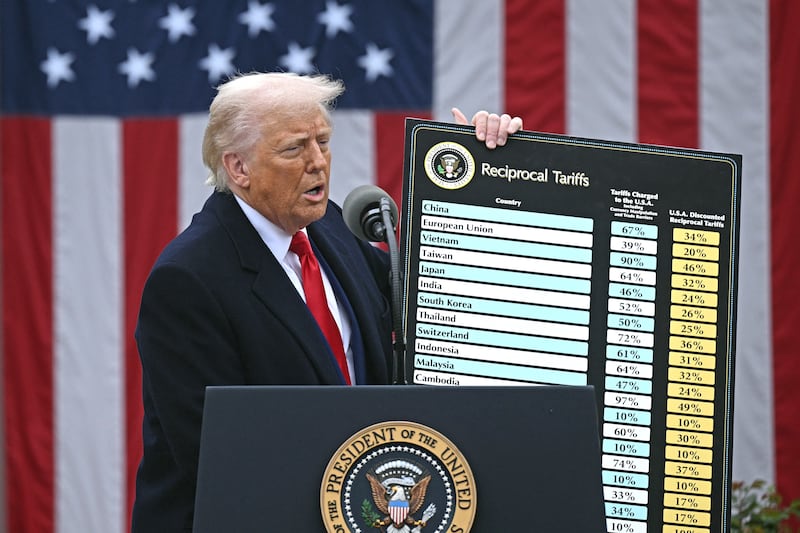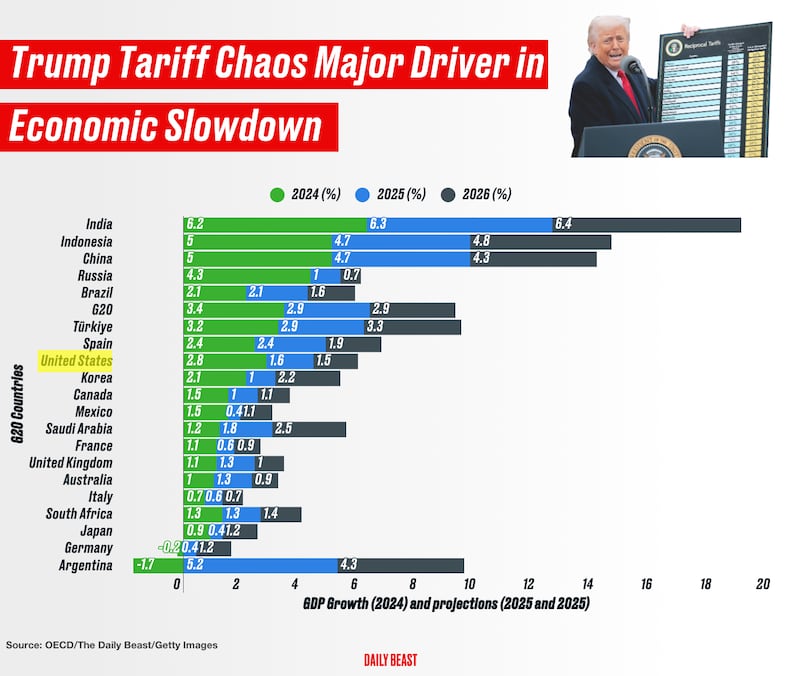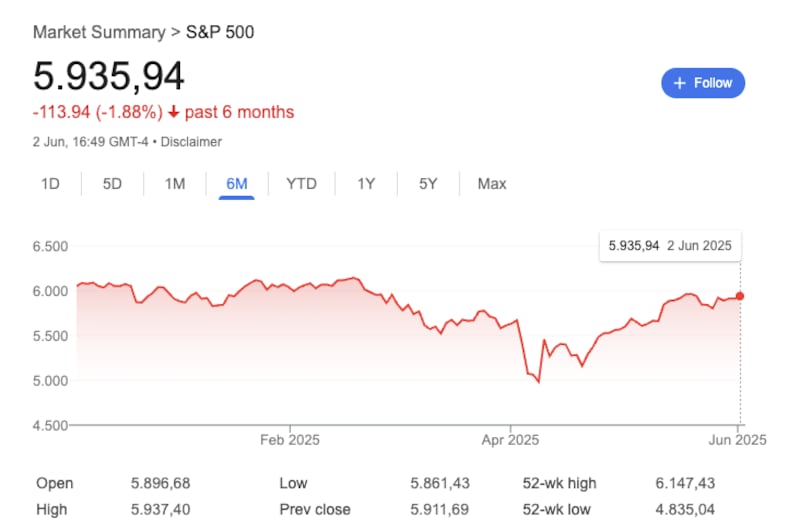President Donald Trump’s trade policies are triggering a global economic downturn, but the president apparently hasn’t gotten the memo.
“Because of Tariffs, our Economy is BOOMING!” Trump boasted in a Truth Social post early Tuesday. Within hours, a damning economic forecast came to the opposite conclusion.
The Paris-based OECD released a forecast predicting global economic growth will slow to 2.9 percent this year, down from 3.3 percent in 2024. The U.S. economy, in particular, is expected to see its growth slow from 2.8 percent to just 1.6 percent, Bloomberg reported.
The OECD’s economists cited Trump’s tariff chaos as the major driver of the gloomier outlook. The combination of trade barriers and economic uncertainty is lowering confidence and hurting investment, while adding to inflationary pressures, the report said.

A smaller federal workforce is also contributing to the downgrade.
“Lower growth and less trade will hit incomes and slow job growth,” the OECD’s chief economist Alvaro Pereira told Bloomberg.

The situation could get worse yet if the U.S.’s trade partners retaliate against the tariffs, confidence drops even further, or stock markets go through another bout of turmoil, according to the OECD.


Trump’s tariff policy continued its wild ride this week as a court ruled against the president’s signature economic policy—which will nevertheless remain in effect while an appeal is heard—and the U.S. and China accused one another of violating the terms of a cooling-off period agreed to last month.
China was the main target of Trump’s April 2 “Liberation Day” tariff announcements, which sparked global market turmoil.
The two countries quickly entered an all-out trade war, with Trump raising baseline tariffs on Chinese imports to 145 percent, while Beijing retaliated with its own 125 percent import tax on U.S. goods.
The two sides agreed in mid-May to lower the temperature, with the U.S. imposing a 30 percent duty on goods from China, and Beijing reducing its tariffs on U.S.-made products to 10 percent.
Over the weekend, Trump accused China of having “TOTALLY VIOLATED” the agreement, while China hit back that the U.S. has “unilaterally and repeatedly provoked” new trade frictions.
Trade ministers from the OECD’s 38 member countries are scheduled to convene in Paris this week, including U.S. trade representative Jamieson Greer, EU trade commissioner Maros Sefcovic, and Chinese Ministry of Commerce official Lin Feng, according to Bloomberg.
The leaders will try to ease trade tensions and lower tariffs to improve growth and combat rising prices.








